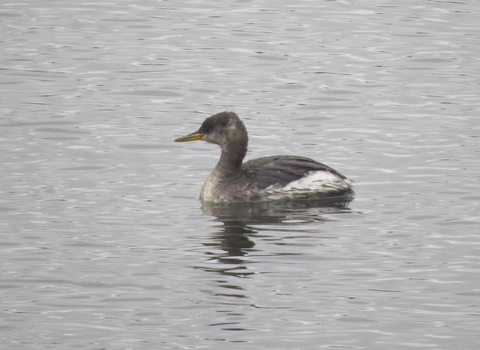
Red-necked grebe (winter) © Tom Hibbert
Red-necked grebe
Red-necked grebes occasionally attempt to nest in the UK, but they're more often seen as winter visitors to sheltered coasts.
Scientific name
Podiceps grisegenaWhen to see
October - MarchSpecies information
Category
Statistics
Length: 40-46cmRare breeding bird, scarce winter visitor. Classified in the UK as Red under the Birds of Conservation Concern 5: the Red List for Birds (2021).
About
The red-necked grebe is a scarce winter visitor to the UK, with small numbers arriving from breeding grounds in Eastern Europe. They're most often seen in sheltered bays on the south and east coasts of England, up into eastern Scotland. Stormy weather can sometimes result in them turning up on inland wetlands. They dive for food, catching fish, crustaceans and aquatic insects.A few birds will sometimes stay in the UK over summer, with pairs even attempting to nest on very rare occasions. Like great crested grebes, they have an elaborate courtship display involving pairs meeting breast-to-breast and rising from the water, with lots of head shaking. As breeding red-necked grebes in the UK are so rare, the location of any pairs attempting to nest is kept secret to protect them from disturbance.
